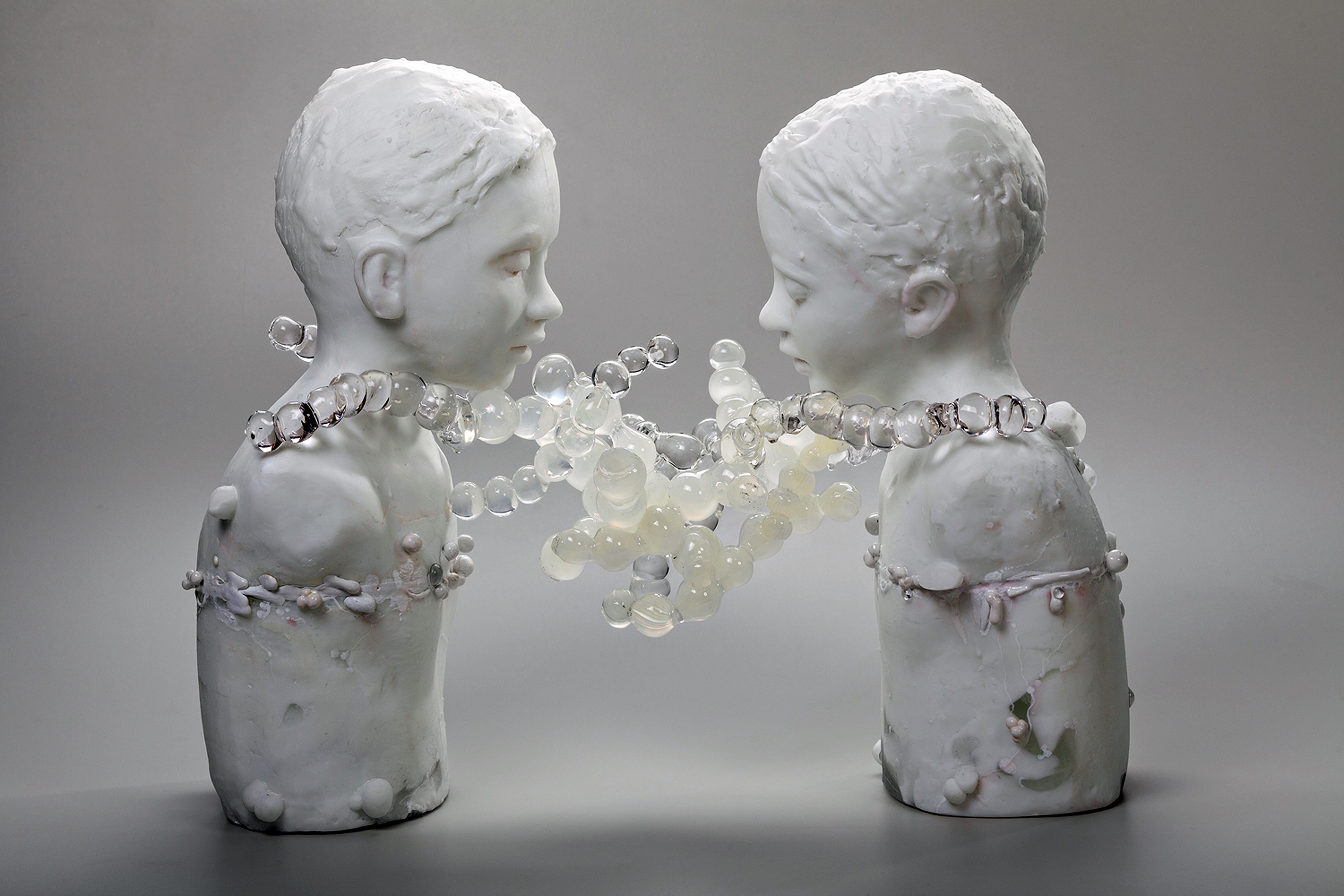消融
Thaw
2012
《消融》系列作品的灵感来源于童话,讲述了融雪揭露新生命的故事。作品中的孩子似乎正从休眠中苏醒过来。艺术家Sibylle Peretti 运用玻璃固有的特性和玻璃所代表的隐喻意义来强调并放大所要表达的核心信息。她的作品包括铸造雕塑、照片板、纸巾画、玻璃板画、有机玻璃板画以及有机玻璃镜像。《消融》系列采用白玻璃,营造出一种和平、脆弱、柔软、具有微妙深度的感觉,以此来暗示生命的特点。
Pieces from the Thaw series are inspired by fairy tales in which melting snow reveals new life. The children in this series appear to be awakening from a dormant stage. Peretti uses the inherent properties and metaphors of glass to underscore and magnify her essential message. The work ranges from cast sculptures to panels built from photographic images, drawing on tissue paper, engraving on glass or Plexiglas as well as its occasional mirroring. White glass is used throughout the Thaw series to create a sense of peace, vulnerability, softness and subtle depth – to suggest life.
艺术家简介 About The Artist

Sibylle Peretti
German/德国
*1964
sibylleperetti.com/home.html
Sibylle Peretti探索人性的缺陷以及人类与自然之间所缺的和谐,结合孩子形象和自然要素。在她的作品中,她极力发现隐藏的世界,相信这样的世界存在和谐,并能缝合人类与自然的间隙。孩子代表脆弱,“处于充满无限谜底的半透明世界,他们通过重新与自然产生某种全新的、亲密的,抑或神秘的联系,从而获得重生。”
尽管她的作品游走于实物和科幻的童话、梦想和好奇心之间,但Peretti用孩子的形象“让我们找回那些或许早已失去的对神秘的敏感”。作品中的孩子“天真无知,由此传递出一种对自身孤立的野蛮看法。”她在逆境下考察孩子的属性。她认为“相对立的两种性质的叠加与相互制约,如疾病与健康、亲密与疏远、无知与真知是我研究的主要特征,这种研究已成为我工作中最重要的一部分。”
Sibylle Peretti explores human failings and our lack of harmony with nature, combining images of children and elements of nature. In her work, she strives to uncover hidden worlds in which a harmony can exist and heal. Children, who represent vulnerability, are placed ‘in a diaphanous universe of potential solutions and revived through a new and intimate, perhaps mystical reconnection with nature.’
While her work hovers between subjects of scientific curiosity, fairy tales and dreams, Peretti uses images of children to ‘open our eyes to a mysterious sensibility we may have lost.’ Her children-protagonists are ‘immaculate in their innocence, transmitting a savage view of our own isolation.’ She examines the child’s identity in a world of adverse layers. She says: “the overlay and containment of irreconcilable natures – of disease and beauty, of intimacy and of distance and of innocence and knowledge – have typified the search I have found most important in my work.”
